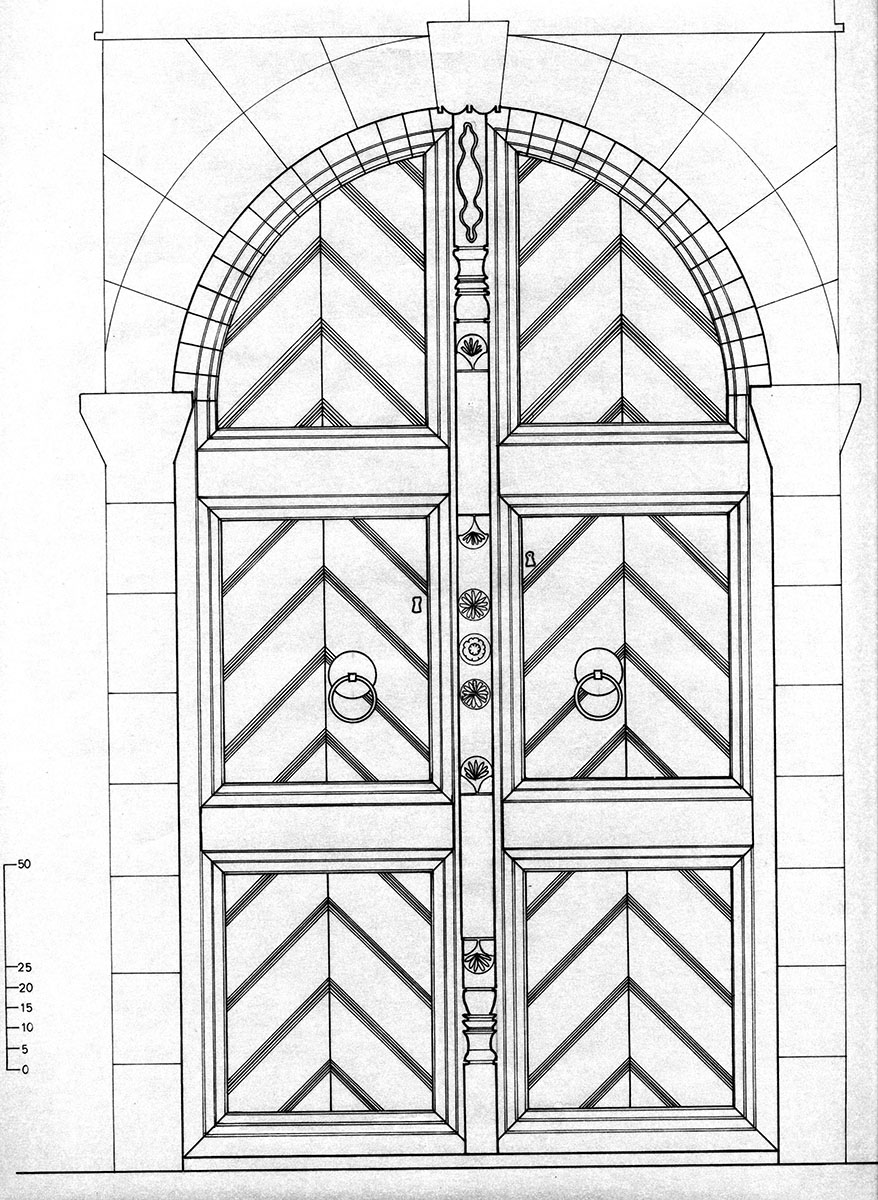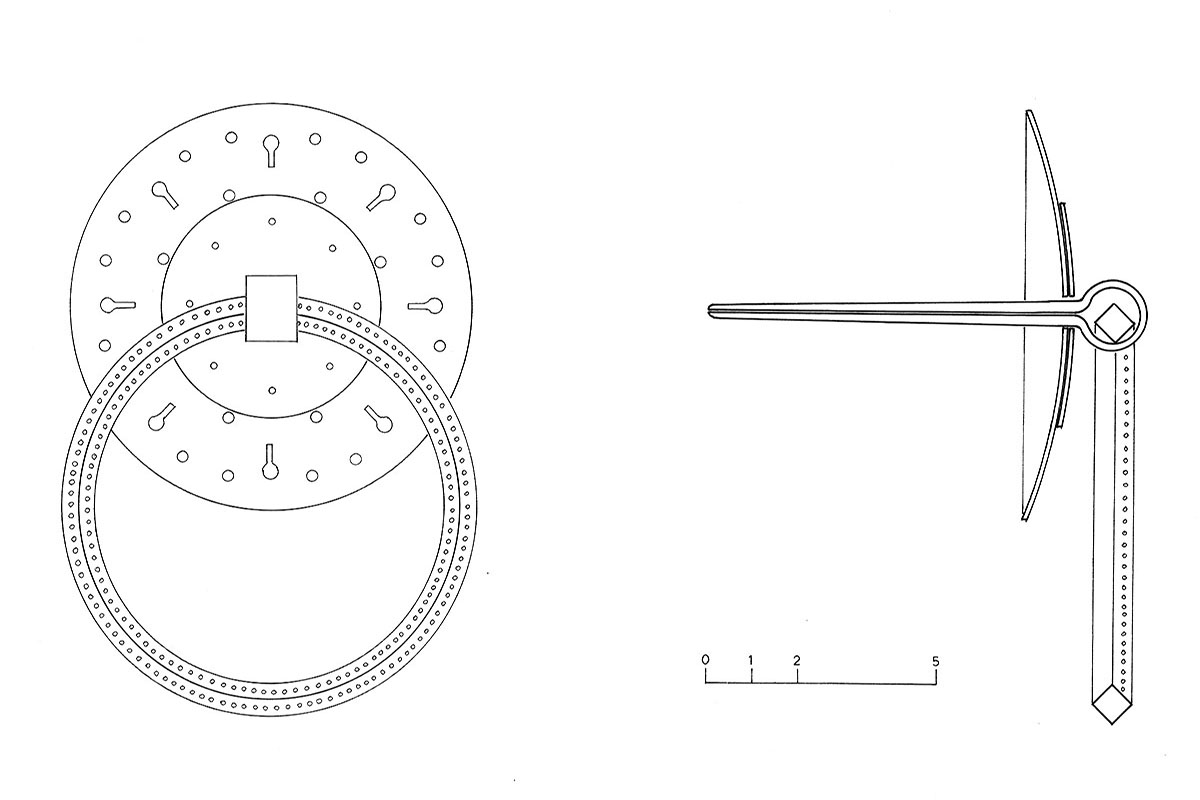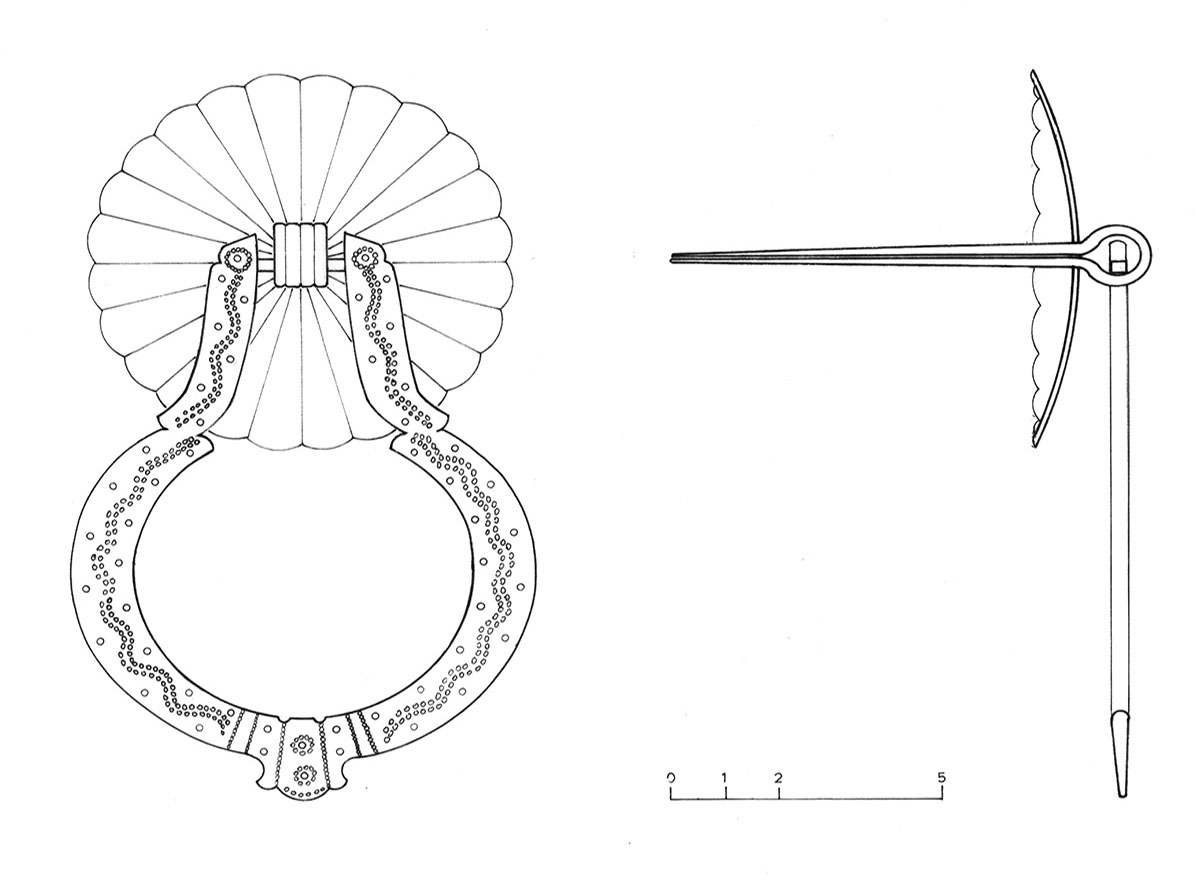Ironwork
Metallic structural elements
Door Ring (Kerkeli)
The Cretan ring-shaped door handle or knocker is known locally as a krikos, krikeli or kerkeli. It is a wrought-iron fixture with local variations, found on outer doors in both rural and urban areas. Usually there are two matching door rings, one on each leaf of the door.

Nailed front door of a Venetian villa. 236 Arkadiou Street, Rethymnon.
The kerkeli is comprised of the ring, the decorative rosette and the shank.
The ring is made from an iron bar which is square in section. Its front, visible side is decorated.
The shank is the part to which the ring is attached. It consists of a flat piece of metal bent double with conical tips, forming a small loop in the centre. It passes through the door from the front, while the ends are turned back on themselves and nailed into the wood from the back. The ring swings freely from the loop.

Door ring, front and section, Etia, Lassithi.
The rosette is fixed to the door at the base of the shank. It is circular in shape with incised and perforated decoration. It becomes slightly convex when worked, making it stand out in relief.
Often two rosettes are used, one smaller than the other. The craftsman can thus vary the size of each ring and rosette depending on the size of the door.

Door ring, front and section, Kendri, Lassithi.
This simple type of door knocker with one or two rosettes and a ring is one of the most widespread across Crete. Equally common is the type with a horseshoe-shaped knocker, rectangular in section, with a decorated front.
The decoration of the ring and the rosette in particular provides the local artisan with a unique chance of expression. These items are wrought with admirable sensitivity and taste, bearing in mind that metal is a difficult material to work, requiring a strong and steady hand to engrave or perforate it, and with no possibility of rectifying a mistake.
A favourite motif is the combination of small circles and shapes reminiscent of simplified human figures or keyholes. Their harmonious combination in imaginary concentric circles (usually two or three in number) on the rosette gives rise to many variations, while the whole always has a unique aesthetic balance and charm. The outline of the figures is engraved with a chisel.
We often find an original combination of the above shapes with engraved patterns or small depressions, lending the whole a unique harmony and charm reminiscent of fine embroidery. The rosette often has a simple engraved decoration with a daisy-shaped outline.
When there are two rosettes together, part of the pattern on the larger one is usually repeated on the smaller, in such a way as to set off the whole. The outline of the rosette is often decorated with larger or smaller crescent motifs, making it look like lacework.
The front of the ring, too, is almost always worked with interesting combinations of notches and depressions.
In many cases the kerkeli is not only used to pull the door closed but also serves as a knocker, with the addition of a broad-headed nail on the lower part of the ring.
The kerkeli was the only ornamentation on entry doors. Its shape was preserved unaltered for a great many years, with only minor differences in decoration. In the large towns, the development of architectural styles under the influence of each set of invaders also affected the shape of this metal object. The circular shape of the rosette changed and its familiar decorative motifs disappeared. The simple ring was replaced by more complex fixtures more decorative than practical.
The influx of foreign craftsmen is noticeable, especially during the Turkish occupation. The kerkeli, as a folk art object preserving echoes of the past, was supplanted by new, foreign shapes. Fortunately it was still preserved unchanged in the countryside. Today, under the influence of Neoclassicism and the use of new materials and techniques (cast iron, copper etc.), it has almost disappeared.
Today only a few workshops continue to make these beautiful objects. However, the old models are simply copied without any attempt at assimilation and development.
